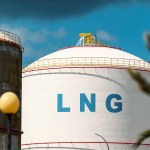Rising trade tension risks could exacerbate the global chemical sector’s challenges, including pressure on margins, soft demand, and oversupply, Fitch Ratings says. Modest improvements in volumes and lower energy and feedstock costs offset some pressures and underpin a ‘neutral’ sector outlook in 2025.
Potential US tariffs expansion and greater trade tensions with China, increasing costs in the US and reducing overall growth for chemical issuers, are major risks to North American issuers, according to our Global Chemicals Outlook 2025. The US will remain cost-advantageous due to lower energy and gas prices, but certain commodity- and agricultural-focused issuers directly or indirectly targeting Chinese markets could face challenges. The ability to effectively pass on tariffs via price increases will be crucial for specialty chemicals issuers.
The European chemicals sector faces intense competition, as increased capacity in China has led to a rise in exports due to insufficient local demand. Escalating trade tensions between the US and China could lead to the redirection of more exports from China to Europe despite some easing due to the disruption in the Red Sea. In addition, the European chemical industry’s net trade surplus with the US could also be affected by tariffs. This could affect demand recovery and keep margins under pressure, reducing deleveraging prospects for European issuers.
Producers report volume increases but weak pricing power heading into 2025 after a prolonged destocking of chemical value chains in 2023-2024, while frail sentiment in downstream industries has deterred restocking. The main industrial sectors, including automotive and construction, remain affected by high interest rates and inflation, which we expect to progressively recede through 2025, with latent positive effects.
The length of the downturn and the weak recovery prospects have led many chemical companies to revise their asset bases, with closures or disposals particularly focused in Europe, where competitiveness is challenged by high energy and feedstock costs, ageing asset bases and a lack of regional growth.
The energy transition is one of the few growth areas, but chemical companies in developed markets have been reducing investment plans due to fading momentum and a lack of regulatory visibility. This adds more uncertainty to the recovery path for producers.
The weaker-than-expected recovery path led to an increase in rating downgrades in 2024 and a rise in Negative Outlooks, although this incorporates the effect of the Negative Outlook on China’s sovereign rating on several state-owned issuers.
Source: Fitch Ratings






